Instruction
Are you curving the ball too much?
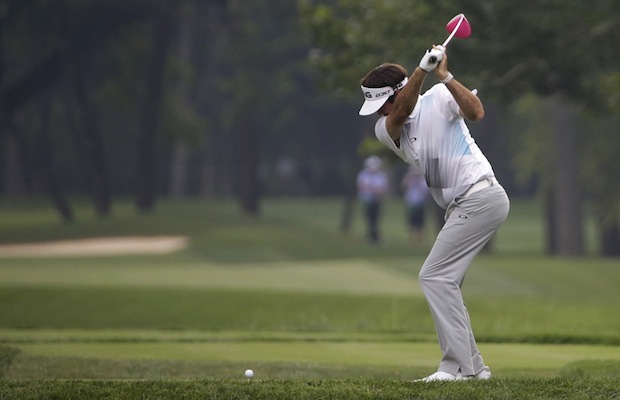
As a teacher, I have to admit that the invention of the Trackman has been one of the most amazing additions to the golf instructional world; however, as with any type of technology, it can be utilized incorrectly and this can hamper the player in the end. Just ask Brandel Chamblee!
One of the trends that I am beginning to see from the younger generation of teachers using launch monitors is requiring their players to “zero out” the face to path numbers in order to obtain less curvature on the ball. While this sounds like a great idea on paper, there is a flaw within this concept.
In the new-age teachers’ defense, they did not see the great players of the past using balata, which allowed the ability to curve the ball much more than you can with today’s golf balls. There were many players playing with drastic curvature that would be better defined as a “sweeping” ball flight. I continually tell my players at the highest levels that it is up to THE PLAYER, not me, as to how much curvature they see visually and how much curvature they can play with comfortably.
Here’s an example: I was playing golf with a multiple time winner on the PGA Tour last year.
“Is it ok to play golf with a face to path relationship that is more than three degrees?” he asked.
I almost fell over when he asked me – of course it is! I asked him first what he “saw”and the amount he “liked” to see the ball curve. He showed me with his hand and my question to him was that if you “see and like” that amount of curvature (which was much more than what he was doing at the time) then why would you try to play with less?
He said his teacher back home was trying to get him to hit the ball with less curve saying his pro students preferred this type of flight. While this seems correct, this player could not play without curving the ball and thus he struggled for 3/4’s of the season until he went back and hit more curving golf shots.
Not everyone can play with the same amount of curvature!
Let me explain the data to you and I’ll dive deeper into the curvature of the golf ball that we discussed above. If you assume that the ball is impacted in the center of the face, then curvature of the golf ball would be created by the difference between the direction of the face at impact and the path at impact.
This difference tilts the d-plane right or left and this, coupled with the loft of the club itself, helps Trackman to create the ball’s spin axis number. Spin axis tells me basically how much the ball is curving.
So let’s examine this sample shot to understand the data:
- The path of the club is moving from out to in left of the target at -3.9 degrees as shown by the blue line
- The face angle at impact is pointing right of the target at impact at 4.2 degrees as shown by the red arrow
- This was a big slice – we can see that the ball begins in the direction of the face and curves away from the path with centered impact in the photo above
- The difference between the face and the path was 8.1 degrees; the bigger the difference the higher the ball’s spin axis number will become, the more it will curve
- The spin axis was 15 degrees and the ball curved 107.8 feet to the right
Ok, so now that we can understand the data, I want to go back to our Tour Pro example of face-to-path amount and subsequent ball curvature. In my opinion, there are three basic ball flights:
1) A very slight curve
2) A moderate curve
3) A big curve
You can play with ALL of these curvature amounts, it just depends on what the player visualizes and is comfortable with in general. So I took my Trackman out and hit the three shots I described above so you can see what I mean. (One note: the wind was blowing about 15 mph from right to left so it was “holding” my faded golf shots a touch).
A slight curve
- Face-to-Path is 1.4
- Spin Axis is 1.8
- This shot should have basically dropped off a touch to the right with very little curvature. This shot moved 5.2 feet from right-to-left
- In a perfect world this would be great, but it’s hard to do consistently due to the tight tolerances necessary to do so
A moderate curve
- Face to Path 5.8
- Spin Axis 6.5
- This ball curved a touch more than the one above, around 20 feet total from right to left
- This moderate curvature gives you some leeway if you miss the center of the blade or get a touch handsy at the bottom of the swing
A big curve
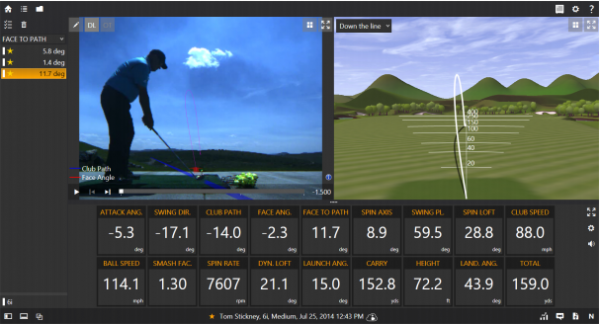
A big right-to-left wind held this shot up a touch.
- Face to path 11.7
- Spin Axis 8.9 (I hit it a touch off the toe and the wind was blowing right to left a touch harder, which negated some of the left-to-right curvature it should have had)
- The ball did curve a total of 40 feet or so giving us bigger movement or more curve
As the player, it’s up to you which of the three flights you deem acceptable in your own world. It’s my thought that the younger generation of teachers, who never saw big curving golf balls, cannot accept the ball moving too much, but it’s really up to the player. If you hyper-focus on limiting curvature and having a super tight face to path/spin axis relationship, you are setting yourself up for some issues. We are not robots, and curvature feels can change from day to day. My suggestion is to use the numbers as a guide to your FEELS, and you’ll play much better in the end!
- LIKE7
- LEGIT0
- WOW0
- LOL0
- IDHT0
- FLOP1
- OB0
- SHANK0
Instruction
The Wedge Guy: The easiest-to-learn golf basic

My golf learning began with this simple fact – if you don’t have a fundamentally sound hold on the golf club, it is practically impossible for your body to execute a fundamentally sound golf swing. I’m still a big believer that the golf swing is much easier to execute if you begin with the proper hold on the club.
As you might imagine, I come into contact with hundreds of golfers of all skill levels. And it is very rare to see a good player with a bad hold on the golf club. There are some exceptions, for sure, but they are very few and very far between, and they typically have beat so many balls with their poor grip that they’ve found a way to work around it.
The reality of biophysics is that the body moves only in certain ways – and the particulars of the way you hold the golf club can totally prevent a sound swing motion that allows the club to release properly through the impact zone. The wonderful thing is that anyone can learn how to put a fundamentally sound hold on the golf club, and you can practice it anywhere your hands are not otherwise engaged, like watching TV or just sitting and relaxing.
Whether you prefer an overlap, interlock or full-finger (not baseball!) grip on the club, the same fundamentals apply. Here are the major grip faults I see most often, in the order of the frequency:
Mis-aligned hands
By this I mean that the palms of the two hands are not parallel to each other. Too many golfers have a weak left hand and strong right, or vice versa. The easiest way to learn how to hold the club with your palms aligned properly is to grip a plain wooden ruler or yardstick. It forces the hands to align properly and shows you how that feels. If you grip and re-grip a yardstick several times, then grip a club, you’ll see that the learning curve is almost immediate.
The position of the grip in the upper/left hand
I also observe many golfers who have the butt of the grip too far into the heel pad of the upper hand (the left hand for right-handed players). It’s amazing how much easier it is to release the club through the ball if even 1/4-1/2″ of the butt is beyond the left heel pad. Try this yourself to see what I mean. Swing the club freely with just your left hand and notice the difference in its release from when you hold it at the end of the grip, versus gripping down even a half inch.
To help you really understand how this works, go to the range and hit shots with your five-iron gripped down a full inch to make the club the same length as your seven-iron. You will probably see an amazing shot shape difference, and likely not see as much distance loss as you would expect.
Too much lower (right) hand on the club
It seems like almost all golfers of 8-10 handicap or higher have the club too far into the palm of the lower hand, because that feels “good” if you are trying to control the path of the clubhead to the ball. But the golf swing is not an effort to hit at the ball – it is a swing of the club. The proper hold on the club has the grip underneath the pad at the base of the fingers. This will likely feel “weak” to you — like you cannot control the club like that. EXACTLY. You should not be trying to control the club with your lower/master hand.
Gripping too tightly
Nearly all golfers hold the club too tightly, which tenses up the forearms and prevents a proper release of the club through impact. In order for the club to move back and through properly, you must feel that the club is controlled by the last three fingers of the upper hand, and the middle two fingers of the lower hand. If you engage your thumbs and forefingers in “holding” the club, the result will almost always be a grip that is too tight. Try this for yourself. Hold the club in your upper hand only, and squeeze firmly with just the last three fingers, with the forefinger and thumb off the club entirely. You have good control, but your forearms are not tense. Then begin to squeeze down with your thumb and forefinger and observe the tensing of the entire forearm. This is the way we are made, so the key to preventing tenseness in the arms is to hold the club very lightly with the “pinchers” — the thumbs and forefingers.
So, those are what I believe are the four fundamentals of a good grip. Anyone can learn them in their home or office very quickly. There is no easier way to improve your ball striking consistency and add distance than giving more attention to the way you hold the golf club.
More from the Wedge Guy
- The Wedge Guy: Golf mastery begins with your wedge game
- The Wedge Guy: Why golf is 20 times harder than brain surgery
- The Wedge Guy: Musings on the golf ball rollback
- LIKE85
- LEGIT13
- WOW6
- LOL1
- IDHT0
- FLOP4
- OB1
- SHANK8
Instruction
Clement: Stop ripping off your swing with this drill!

Not the dreaded headcover under the armpit drill! As if your body is defective and can’t function by itself! Have you seen how incredible the human machine is with all the incredible feats of agility all kinds of athletes are accomplishing? You think your body is so defective (the good Lord is laughing his head off at you) that it needs a headcover tucked under the armpit so you can swing like T-Rex?
- LIKE0
- LEGIT2
- WOW2
- LOL0
- IDHT0
- FLOP0
- OB0
- SHANK2
Instruction
How a towel can fix your golf swing

This is a classic drill that has been used for decades. However, the world of marketed training aids has grown so much during that time that this simple practice has been virtually forgotten. Because why teach people how to play golf using everyday items when you can create and sell a product that reinforces the same thing? Nevertheless, I am here to give you helpful advice without running to the nearest Edwin Watts or adding something to your Amazon cart.
For the “scoring clubs,” having a solid connection between the arms and body during the swing, especially through impact, is paramount to creating long-lasting consistency. And keeping that connection throughout the swing helps rotate the shoulders more to generate more power to help you hit it farther. So, how does this drill work, and what will your game benefit from it? Well, let’s get into it.
Setup
You can use this for basic chip shots up to complete swings. I use this with every club in my bag, up to a 9 or 8-iron. It’s natural to create incrementally more separation between the arms and body as you progress up the set. So doing this with a high iron or a wood is not recommended.
While you set up to hit a ball, simply tuck the towel underneath both armpits. The length of the towel will determine how tight it will be across your chest but don’t make it so loose that it gets in the way of your vision. After both sides are tucked, make some focused swings, keeping both arms firmly connected to the body during the backswing and follow through. (Note: It’s normal to lose connection on your lead arm during your finishing pose.) When you’re ready, put a ball in the way of those swings and get to work.

Get a Better Shoulder Turn
Many of us struggle to have proper shoulder rotation in our golf swing, especially during long layoffs. Making a swing that is all arms and no shoulders is a surefire way to have less control with wedges and less distance with full swings. Notice how I can get in a similar-looking position in both 60° wedge photos. However, one is weak and uncontrollable, while the other is strong and connected. One allows me to use my larger muscles to create my swing, and one doesn’t. The follow-through is another critical point where having a good connection, as well as solid shoulder rotation, is a must. This drill is great for those who tend to have a “chicken wing” form in their lead arm, which happens when it becomes separated from the body through impact.
In full swings, getting your shoulders to rotate in your golf swing is a great way to reinforce proper weight distribution. If your swing is all arms, it’s much harder to get your weight to naturally shift to the inside part of your trail foot in the backswing. Sure, you could make the mistake of “sliding” to get weight on your back foot, but that doesn’t fix the issue. You must turn into your trial leg to generate power. Additionally, look at the difference in separation between my hands and my head in the 8-iron examples. The green picture has more separation and has my hands lower. This will help me lessen my angle of attack and make it easier to hit the inside part of the golf ball, rather than the over-the-top move that the other picture produces.


Stay Better Connected in the Backswing
When you don’t keep everything in your upper body working as one, getting to a good spot at the top of your swing is very hard to do. It would take impeccable timing along with great hand-eye coordination to hit quality shots with any sort of regularity if the arms are working separately from the body.
Notice in the red pictures of both my 60-degree wedge and 8-iron how high my hands are and the fact you can clearly see my shoulder through the gap in my arms. That has happened because the right arm, just above my elbow, has become totally disconnected from my body. That separation causes me to lift my hands as well as lose some of the extension in my left arm. This has been corrected in the green pictures by using this drill to reinforce that connection. It will also make you focus on keeping the lead arm close to your body as well. Because the moment either one loses that relationship, the towel falls.


Conclusion
I have been diligent this year in finding a few drills that target some of the issues that plague my golf game; either by simply forgetting fundamental things or by coming to terms with the faults that have bitten me my whole career. I have found that having a few drills to fall back on to reinforce certain feelings helps me find my game a little easier, and the “towel drill” is most definitely one of them.
- LIKE12
- LEGIT2
- WOW2
- LOL0
- IDHT0
- FLOP2
- OB0
- SHANK8
-

 19th Hole1 week ago
19th Hole1 week agoDave Portnoy places monstrous outright bet for the 2024 Masters
-

 19th Hole3 weeks ago
19th Hole3 weeks agoThings got heated at the Houston Open between Tony Finau and Alejandro Tosti. Here’s why
-

 19th Hole1 week ago
19th Hole1 week agoTiger Woods arrives at 2024 Masters equipped with a putter that may surprise you
-

 19th Hole2 weeks ago
19th Hole2 weeks agoReport: Tiger Woods has ‘eliminated sex’ in preparation for the 2024 Masters
-

 19th Hole5 days ago
19th Hole5 days agoTwo star names reportedly blanked Jon Rahm all week at the Masters
-

 19th Hole4 days ago
19th Hole4 days agoNeal Shipley presser ends in awkward fashion after reporter claims Tiger handed him note on 8th fairway
-

 19th Hole3 days ago
19th Hole3 days agoReport: LIV Golf identifies latest star name they hope to sign to breakaway tour
-

 19th Hole2 weeks ago
19th Hole2 weeks agoAddiction, spinal fusion, and scam artists – Everything Anthony Kim revealed in candid interview with David Feherty

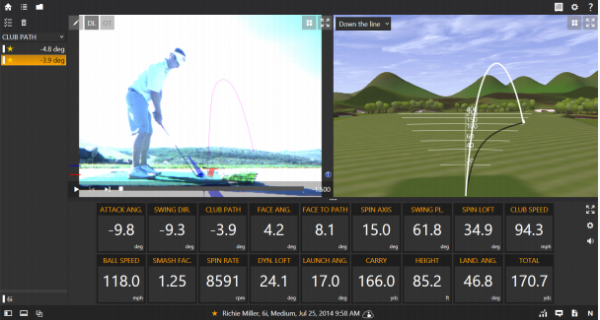
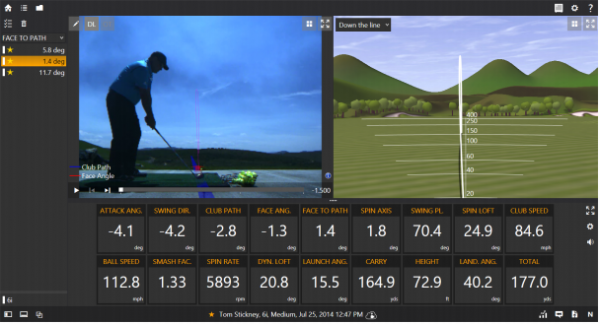
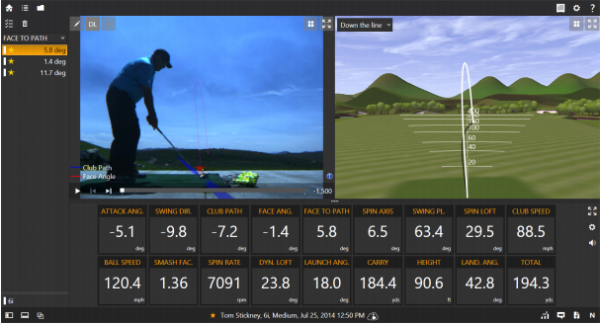














Pingback: Analyzing golfers’ “favorite” shots on Trackman | GolfClick.net | Blog
Large chris
Aug 15, 2014 at 7:24 am
I understand Ian Poulter has been trying to zero out all year and his game has collapsed….
I think Chamblee was saying that Tiger has been trying to do it as well, and it was causing him to get even steeper into the ball.
Tom Stickney
Aug 15, 2014 at 9:22 am
It’s tough but not impossible. Hard to maintain.
Holton
Aug 14, 2014 at 7:19 pm
Notable that the lower the swing plane was the more the ball curved. Cool article!
Tom Stickney
Aug 15, 2014 at 12:41 am
Glad you liked it. Thx.
Jamie
Aug 13, 2014 at 8:37 am
If you want accurate measure try Foresight’s GC2 with HMT attachment. You get all of Trackman stats with club head measurements because it actually takes pictures of the club hitting the ball and measures ball flight after impact. I have one and find it very helpful and it’s less expensive than Trackman, as if not more accurate and gives more options.
Tom Stickney
Aug 13, 2014 at 9:49 am
Anything is better than nothing in the launch monitor world I’ve always said.
Pingback: Are you curving the ball too much? | Spacetimeandi.com
Jeff
Aug 12, 2014 at 9:39 am
What do they say, the hardest shot to hit is a straight one? If one can learn to hit a consistent reliable shot then what does it matter if it curves too much or too little? Ball flight is the ultimate telltale. Tom, I’m pretty impressed with the 3 shots. Nice control!
Tom Stickney
Aug 12, 2014 at 2:04 pm
Agree. Thx. Wind was howling rt to left. Killing my buttercut. 🙂
MJ
Aug 12, 2014 at 2:57 pm
I noticed you striped that moderate curve ball! Impressive distance on that.
Tom Stickney
Aug 12, 2014 at 10:49 pm
Thx
Jeff
Aug 12, 2014 at 8:37 pm
Isn’t that the way to get it close to the pin though. Hold the shot into the wind?
Tom Stickney
Aug 12, 2014 at 10:49 pm
Sometimes. But not all the time.
Martin
Aug 12, 2014 at 5:40 am
I have fallen into the need for lower spin rates with a driver, everytime I get one that gave me low spin rates on a monitor It ends up being unreliable on the course as my fade turns into a slice.
I recently bought one that I rented in a scramble that I hit the crap out of, interestingly I rejected it over the winter as too high a spinner. Now I won’t hit it on a monitor for love nor money, because I suspect the readings wouldn’t be good.
I aim right, take the club back low and wide and then pull the ball down the middle and since I bought this club and stopped chasing the holy grail of high launch low spin my FW hit has jumped way up and my index has dropped from 10.5 to 8.7.
Monitors are useful, but you need to trust what you see and make it work on the course. I am not talented enough to reproduce a perfect swing on the course.
Tom Stickney
Aug 12, 2014 at 9:24 am
If it doesn’t work on the course it’s useless.
Jason
Aug 11, 2014 at 4:56 pm
How can you see the club face if trackman is behind, or does it just assume where the club face is pointing due to the flight of the ball.
tom stickney
Aug 11, 2014 at 7:40 pm
Trackman only measures the clubface at the point of impact
Pete Player
Aug 12, 2014 at 12:11 am
I severely doubt the device actually measures the orientation of the club face at impact. Yet, the software shows it in detail.
Would be nice to see, what the manufacturer of the thing has to say and explain how the orientation actually is detected, how many hits do they get of the club face at impact etc.
Tom Stickney
Aug 12, 2014 at 12:43 am
It was developed for ballistics testing. Golf was a spinoff. Measures it and many other factors…that’s why it’s so expensive.
Jack
Aug 12, 2014 at 1:54 am
Have you seriously looked into this or are you just guessing? Pro players and coaches use this all the time. It’s not witchcraft. Or maybe you’re just smarter than everyone else.
CD
Aug 12, 2014 at 5:26 pm
It’s a radar and bounces off a clubhead ‘blob’, an algorithm is then applied. My own experience on trackman is that in the hands of an excellent teacher is it a brilliant tool. For example, I find working on mechanics is best done away from seeing the ball flight (distracting), and trackman enables me to hit whilst focusing on the feel and not seeing the ball flight directly, yet then able to see what the ball flight (representation) was, if that makes sense. My experience is it represents exactly what I see on course.
Tom Stickney
Aug 12, 2014 at 8:28 pm
Thx for the info cd.
Richard
Aug 11, 2014 at 3:52 pm
Agree 100%. I think too many golfers are worried about trying to zero everything out, but that just isn’t practical. When I’m driving the ball really well, I’m typically hitting a slight fade and I love it. My irons almost always fly pretty straight – just push or pull. When I’m on the course the only thing that matters is fairways and greens. How I get there is another story.
Tom Stickney
Aug 11, 2014 at 5:44 pm
Yep! Thx.
Pete Player
Aug 12, 2014 at 12:19 am
Well, I tend to cut all my irons, yet they go pretty far and straight normally.
With driver it’s a whole different story. Since I broke my former driver, that I’d deployed for about 7 years, I’ve not yet built a similar relationship with the new one and have gained a two-way-miss-phenomena in the process curving the ball both ways without actually feeling the difference in the shots. Makes it really hard to play the game tee to green.
Tom Stickney
Aug 12, 2014 at 2:05 pm
Your swing path is left with the irons and rt with your driver due to its lie angle is guess
Jack
Aug 12, 2014 at 1:56 am
I think most people aren’t good enough to zero it out. And it’s more important to be consistent and effective anyway. but it’s a good tool to use to fix swing flaws. Easily tell what part of the impact is going wrong (path, clubface, etc etc).
Tom Stickney
Aug 12, 2014 at 2:06 pm
Zero is hard. It’s a great tool.